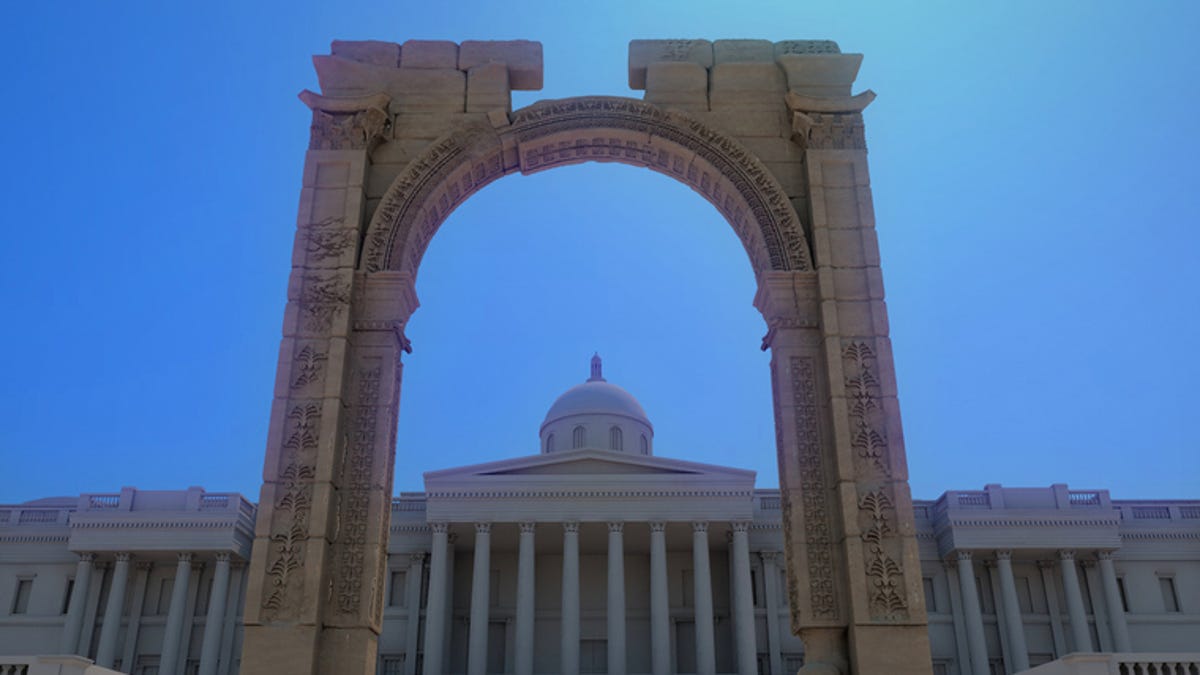ISIS-destroyed monument rebuilt with 3D technology
The Monumental Arch of Palmyra, built by the Romans and destroyed by Islamic State, has been restored, at the cost of around $145,000, thanks to 3D technology.
It lasted nearly 2,000 years. Erected sometime in the late second to early third century AD, the Monumental Arch of Palmyra in Syria is thought to have been built to commemorate Roman victories in Parthia (now Iran).
This ancient monument stood until 2015, when the Islamic State of Iraq and the Levant, also known as Daesh and ISIS, captured Palmyra and blew the arch up with dynamite. All that history, all those years, gone in a moment.
But all is not lost. It's not the original monument, but thanks to 3D technology, the arch stands again. Today in Trafalgar Square in London, the Institute of Digital Archaeology unveiled a two-thirds scale model of the Monumental Arch carved from Egyptian marble.
When Palmyra was attacked, the Institute's director, Roger Michel, reached out through its Million Images Database, which distributes 3D cameras to volunteers for the purposes of recording important artefacts, to get photographs of important monuments in the area. The Institute used the resulting 3D photographs of the arch to construct an accurate digital 3D model of the arch.
This model was used by a robotic arm to painstakingly carve the arch, which stands 5.5 metres high (18 feet) out of stone. In all, the project cost about $145,000.
"These monuments represent the shared history of humanity and stand for a rich and complex past that unites all people," Michel said in a statement. " By rebuilding these structures, we rebuild not only our own national histories, but our connections to each other, as well."
The arch will remain in London for three days before travelling to other cities around the world, the BBC reports. It will be permanently installed at Palmyra next year, near where the original arch stood, both as historical record and an act of defiance against the destruction wreaked by violence.
"There is actually a message within the Million Image Database initiative for those who think you can wipe out our human heritage with acts of destruction," said Mohammed Abdullah Al Gergawi, Dubai Minister of Cabinet Affiars and managing director of the Dubai Museum of the Future Foundation, on the Institute of Digital Archaeology website.
"What you destroy, we can create again. Our desire to live together, to work together for our humanity is a positive force that can rebuild everything you break. Ultimately, we are stronger because we build."


